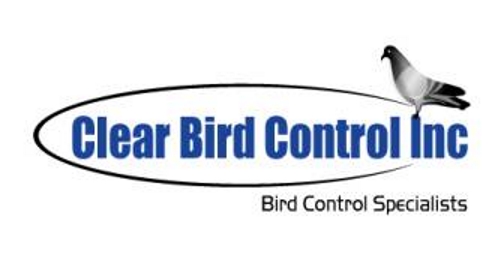Frequently Asked Questions
Q. What are the HEALTH RISKS associated with pest birds?
A. The general public seriously underestimates the health risks associated with pest birds. Pest Birds harbor over forty types of parasites and can host internally over sixty types of infectious diseases including West Nile Virus and Avian Flu. Pest birds have become a major nuisance in our cities and they pose a serious health risk. Diseases may live in the bird and be passed on when the bird defecates. This makes bird droppings very unsanitary and dangerous. Food and water may become contaminated. Dried feces may become airborne and settle on exposed food or water. Several thousand cases of food poisoning (Salmonella) are attributed to this type of bird feces contamination each year). The dried fecal particles may contain fungi and/or bacteria and when airborne may be inhaled into the lungs. In a small percentage of infected cases, major fungal infection causes long-term disability and even death. There is no known medical cure for internal fungal infections. Direct contact of feces with an open wound or cut where infection occurs often necessitates antibiotics to cure the infection. In some rare cases infection of the blood (Sepsis) or internal infection may cause serious illness or death. Pest birds harbor ticks, fleas, mites and other ectoparasites. Parasites transfer disease by biting an infected animal and sucking in blood containing the germ. When the bug bites its next victim it passes along the germ to the new victim. Over forty types of parasites live either on the birds, in their nests or in the places they roost. They are responsible for the transmission of several hundred viral and bacterial agents including plague, encephalitis, pox and meningitis.
Q. What kind of DAMAGE can pest birds cause?
A. Pest birds cause tens of millions of dollars of damage every year to buildings, siding, insulation, roofing materials, ventilation systems, air conditioning units, machinery, equipment, inventory, automobiles, and much more. Droppings and nesting materials on or around a building can damage your company image and sends a message to the public that the building is not properly maintained, dirty or unkempt. Acidic droppings eat through metal, paint, fabric, plastic, and roofing materials. Nesting materials and droppings can clog drains and gutters, can build up on roofs causing excessive weight resulting in collapse. Nesting materials are usually very flammable made up of straw, twigs and dried droppings. Droppings on sidewalks can cause slip and fall accidents resulting in insurance losses, and worker or customer injuries. When birds build their nests inside electric signs or other machinery there is a great risk of fire. Electric sign companies blame bird nests for most of their sign fires.
Q. What is Avian Influenza (Bird Flu) and how will it affect the United States?
A. Bird flu is an infection caused by avian (bird) influenza (flu) viruses. Similar to humans, birds can carry and transmit different strains of a flu virus. The current concerns are regarding a strain named avian influenza A (H5N1). This H5N1 flu has been found in Asia and Europe and has been found, though very rarely, to have the ability to infect humans. The current risk to Americans from the H5N1 flu outbreak in Asia and Europe is very low. The strain of H5N1 virus found in birds in Asia and Europe has not been found in birds in the United States. There have been no human cases of H5N1 flu in the United States. In the current outbreak human cases of H5N1 flu have been reported in: Cambodia, China, Indonesia, Thailand, and Vietnam. Even in countries with the outbreaks, the risk from bird flu is low because the viruses occur mainly among birds and do not usually infect humans. However, during an outbreak of bird flu among poultry (domesticated chicken, ducks, turkeys), there is a possible risk to people who have contact with infected birds or surfaces that have been contaminated with excretions from infected birds. The greatest concern regarding H5N1 flu is that the virus – if given enough opportunities – will change into a form that is highly infectious for humans and spreads easily from person to person. Such a change could mark the start of a global outbreak.
Q. What is Avitrol?
A. Avitrol is a flock-alarming grain used to target pigeons and other pest birds. A small number of the pigeons will ingest this treated bait, causing them to emit distress calls and actions, frightening the flock, resulting in the flock leaving the area. Avitrol has a 2% mortality rate. If there is a large population of pigeons, trapping will be used first to reduce the number of pigeons affected.
Q. Which species of birds are considered “pest birds”?
A. Pigeons, starlings, and sparrows are all considered pest birds. Crows, owls, seagulls, ravens, ducks, and swallows are all protected birds and removal and relocation as well as exclusion products may be used to control these types of birds.







